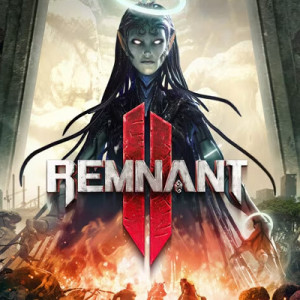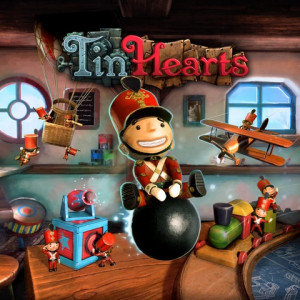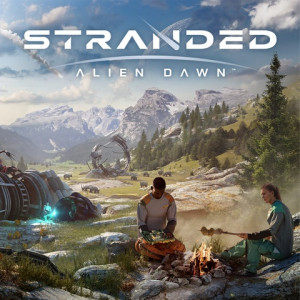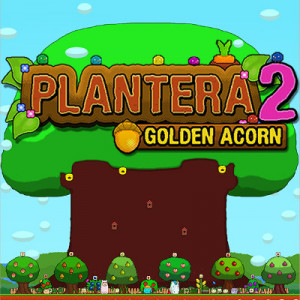This is a Guest review by Shinedog
Order of War. It's an RTS, it's set in World War 2, and it's not completely terrible.
Right then! Are we done? No? Shucks.
 Actually, I'm being more than a little unfair here, jaded by years of world war 2 RTS games and samey mechanics. Of course, when done well there is nothing wrong with following a well established template, after all, Company of heroes follows the RTS template closely, but clever cover mechanics, crashing physics and excellent atmospherics made the game an absolute gem. Unfortunately, Order of War never quite finds its voice, and while the developers have tried, it ends up feeling distinctly uninspired, unpolished, and derivative.
Actually, I'm being more than a little unfair here, jaded by years of world war 2 RTS games and samey mechanics. Of course, when done well there is nothing wrong with following a well established template, after all, Company of heroes follows the RTS template closely, but clever cover mechanics, crashing physics and excellent atmospherics made the game an absolute gem. Unfortunately, Order of War never quite finds its voice, and while the developers have tried, it ends up feeling distinctly uninspired, unpolished, and derivative.
First impressions are pretty good. There are two campaigns, one of which lets you play the Germans, which is always nice. (They may have been the bad guys but they had much cooler tanks. And helmets.) Missions are introduced with well made (though generic) cutscenes comprising of old stock footage and maps overlaid with dramatic Dads Army style swooshing arrows , (Also present during the missions to alert you to scripted enemy movements. It's always fun to watch a platoon of infantry being menaced by a giant arrow) and the graphics are solid despite some iffy particle effects, with huge battles, and a long draw distance running smoothly on a fairly average PC with all the details up. The sound quality is decent, with passable voice acting, particularly unusual for a game developed in Russia. Everything seems good at first, but once you get into the game that the shine comes off.
The modern RTS comes in two flavours. Those with base building, and those without. Order of War falls firmly into the latter category, using very similar mechanics to World in Conflict and Ground control. You have an army, you capture Control points, and these let you call in new troops that trundle in from the edges of the map. The troops you recruit come in the usual anti tank and anti infantry flavours, but there are few specialist units and almost no special abilities, leaving the different armies feeling rather dry and uninteresting. (I'm sure people will try and argue realism with this, but its hard to claim that in a game where riflemen can run up to tanks and pelt them with frag grenades until they explode.) Occasional off map support, including rather exciting fighter bomber strafing runs, are available to add a little excitement.
While the underlying mechanics are basic, it becomes understandable when you see the amount of troops you are commanding at once. Order of War tries to distinguish itself with its scale, and its an approach that occasionally works. Units come in large teams, and huge groups enter battle at a time (although often many will be under allied control) and you will sometimes see thousands of men on the field at the same time. It certainly features some of the largest battles I've seen in this kind of game and it can frequently be quite spectacular, particularly when coupled with a clever cinematic camera mode, which can be activated at any time and focuses on the most dramatic parts of the fight.
Unfortunately, the huge scale doesn't offer a lot of benefits to the actual gameplay. Controlling the troops is awkward, mainly thanks to the way the game handles group movement, where troops are automatically spaced in a formation that theoretically allows places troops in mutually beneficial locations, with skirmish screens of infantry and support units taking up the rear. It's a nice idea but doesn't work out in practise, units end up enormously spaced out, but tough, entrenched opponents and short firing ranges mean that its usually best to simply command everyone to attack a single target, creating an enormous blob of death, moving from hostile to hostile. It's hardly tactically deep.
 This isn't helped by a large amount of abstraction within the game itself. For instance, infantry have effectively 3 levels of cover: In a building, in a forest, or horribly exposed. Level design gives you few opportunities to use forests to provide cover, and so for the most part infantry is either stuffed in buildings or simply functions as a meat shield for mobs of tanks. There is little room for interesting tactics during the campaign, as the opposition has anti tank and anti infantry units layered together behind trenches, and the lack of fidelity in modelling cover leaves little room for tactics more interesting than finding the least defended approach and charging en mass, occasionally ordering everyone to focus fire on a hard target. This isn't helped by fairly passive AI, which usually fires from a stationary position while occasional reinforcements attack along a preset route.
This isn't helped by a large amount of abstraction within the game itself. For instance, infantry have effectively 3 levels of cover: In a building, in a forest, or horribly exposed. Level design gives you few opportunities to use forests to provide cover, and so for the most part infantry is either stuffed in buildings or simply functions as a meat shield for mobs of tanks. There is little room for interesting tactics during the campaign, as the opposition has anti tank and anti infantry units layered together behind trenches, and the lack of fidelity in modelling cover leaves little room for tactics more interesting than finding the least defended approach and charging en mass, occasionally ordering everyone to focus fire on a hard target. This isn't helped by fairly passive AI, which usually fires from a stationary position while occasional reinforcements attack along a preset route.
Despite the AI being fairly brainless, don't assume the game is always easy. Although don't assume it's always hard either, rather it seems quite schizophrenic. Most missions simply will not let you lose, constantly spawning replacement units should you lose too many, with only an angry commander and a few less upgrade points between missions as a penalty. The next mission may hit you with a brick wall, with an early task particularly unfair, asking the player to assault a heavily defending town, defend against a counter attack, and then assault an enormous trench network under artillery fire with only a handful of reinforcements, (And worse, no hint that the usual respawning had been disabled). This mission also highlighted some bizarre balancing issues, with a single unit of nebelwerfer artillery (a multiple launch mortar designed to kill infantry) destroying ten or so tanks, themselves unable to land a killing shot. I will happily admit I lucked through this one.
It's a strange result. I am no stranger to difficult RTS games, having the masochistic tendancies required to play through Men of War, for instance, but it's extremely jarring to go from a casual gamer friendly RTS to patently unfair and seemingly broken missions, and there are a number of brick wall scenarios throughout the game.
Things are, fortunately, better in multiplayer. Players face off against one another on an open map to claim command points, utilising the full range of units from single player to give each other a good decking. It's solid fun, despite frequently degenerating into a chase scene as armies race around capturing command points and ignoring each other. It's a shame that the three factions (US, Germany, and Russia) are extremely similar, with most units being functionally identical to their counterparts on the other sides.
You may well have some simple fun in the multiplayer, but don't count on being able to do it for too long. The online population at the time of writing is rather sparse, and it doesn't seem like this games multiplayer has set the world on fire.
 At the end of the day, this review maybe sounds a little more negative than it really should. This isn't a terrible game, it's just an empty one. It doesn't have any real flair or style, and while it tries to impress with enormous battles, it seems to come at the expense of any real tactical or strategic depth, and while its fun enough to blob up tanks for an assault on enemy lines, you wont really be doing much else, and difficulty spikes serve to suck a lot of the joy out of the game.
At the end of the day, this review maybe sounds a little more negative than it really should. This isn't a terrible game, it's just an empty one. It doesn't have any real flair or style, and while it tries to impress with enormous battles, it seems to come at the expense of any real tactical or strategic depth, and while its fun enough to blob up tanks for an assault on enemy lines, you wont really be doing much else, and difficulty spikes serve to suck a lot of the joy out of the game.
It's hard to recommend the game when everything it does is done better elsewhere. World in Conflict, Men of War, and particularly Company of Heroes all give a much more interesting take on the pseudo real world strategy game, with far more interesting, challenging, and dramatic takes on warfare, but if you have played these to exhaustion, you may find some value in Order of War.





